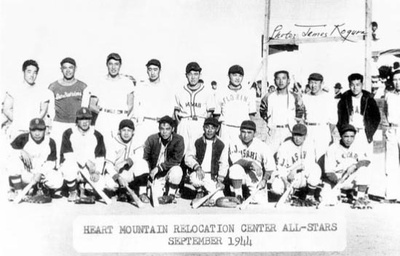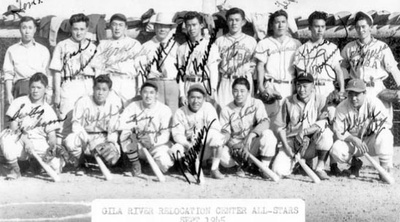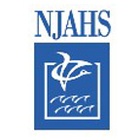More than 62 years ago, in September 1944, a baseball series pitted Gila River and Heart Mountain internment camps. It now seems like ancient history, but it’s amazing how such an obscure sports event can be so indelibly etched in one’s memory. I turned 17 years old just a month prior to the series. The passage of time has surely blurred out many details. However, I will endeavor to do my utmost to shed some light on those games as I remember them.
With the war still raging, I considered the fact that these games even occurred a phenomenal feat that coach Ken Zenimura and Harry Kono of Gila River had engineered. In addition, Rosie Matsui and Russ Hinaga were largely instrumental for completing negotiations for the Heart Mountainside. As I reminisce, it is with pride and gratitude that I take this opportunity to salute Kenichi Zenimura for all his contributions to our national pastime, pre-war and during internment. Many have called Zenimura the father of Japanese American baseball. “Coach Zeni,” as he was called by many of us, indeed possessed a tremendous knowledge of baseball savvy, but above all, he wanted every player to become a better human being by realizing his responsibility and compassion for his fellow man.
The Matsui and Hinaga committee had decided to raise money for the series by pre-selling reserved seat booster tickets and bleacher seats. This generated enough funds for one-third of Gila’s overall travel expenses, which they generously made available. The balance was to be paid by Gila. The Gila fans, especially the players’ Issei parents, donated equally generously. The players themselves took various jobs at the camp farms, motor pool, the camouflage net factory, and picked cotton on corporate farms 20 miles away from camp.
Gila was quite aware of our Heart Mountain opponents. They had a star-studded roster with the likes of the Akizukis, Sasanos, Nomuras and Sundos. Coach Zenimura had praise for their young pitcher George Iseri of Wapato, WA, the only pitcher who had beaten us twice.
In addition to Fresno, Alameda and San Pedro, most of our players came from tiny hamlets scattered throughout California, such as Clarksburg, Suisun, Lompoc, Parlier, Carpentaria and Guadalupe. Our older pre-war players were Kay Ishimoto of University of California Davis’ Cal Aggies; Tom Murata of Guadalupe YMBA, Tak Abo from Fresno and Key Kobayashi of the Alameda Konos. The remaining nine were all high schoolers, 16 or 17 years of age. This group of youngsters formed the core of the Gila High School Eagles that went on to defeat the Tucson High School Badgers (three-time Arizona State Champions) 11-10 in the 10th inning in the Spring of 1945. The two teams reunited in August 2006 at a “Hall of Fame Night” at Tucson Electric Park.
For the Gila team, boarding the Santa Fe Trailways bus at Phoenix and journeying forth was exciting to say the least. Imagine our joy in breathing the fresh air of freedom after being incarcerated for two and a half years on an Indian reservation. We were divided into two groups so as not to attract unnecessary attention. However, along the way we were accosted by whites who confronted us with derogatory remarks. We tactfully answered by explaining that we were just heading north to aid in the war effort by helping the potato and sugar beet harvests. This seemed to be a legitimate reason to defuse a potential crisis. I believe that coach Zenimura had our “work permits” stashed away in his brief case. Incidentally, the only potato I saw in the northland was in Heart Mountain’s underground storage facility by the railroad tracks near its front entrance.
The series had a tight schedule of 13 games in 15 days. Gila won nine of them. One game lasted 11 innings. One of the “rest” days was due to a violent dust storm that terminated the game after two innings. The pitcher could not locate his catcher, it was so dusty.
All the good people of Heart Mountain extended to the Gila team a warm welcome and home-run hospitality. The royal treatment was accorded the visiting team with banquets, special parties and dance socials. Families invited players over for dinner at the barrack homes for an enjoyable evening topped with gifts. What priceless memories many of us who were a part of this experience have been left with to savor, so that when future generations ask, “How was it done?” we have this baseball story to tell, as part of our historical legacy.
* This article was originally published in Nikkei Heritage Vol. XVIII, Number 2 (Winter 2006), a journal of the National Japanese American Historical Society.
© 2006 National Japanese American Historical Society





